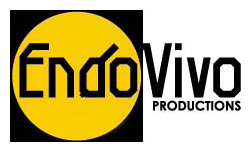The Fibrillar network and fascia
The fibrillar network is found everywhere and so it could be called Fascia.
The term “fascia” is not widely used in anatomy during medical and surgical training. However, it is widely used by medical and paramedical manual therapists.
I therefore rarely speak of fascia because, in accordance with intratissular endoscopic observations, I prefer to speak of a continuous fibrillar architecture responsible for form.
This is a matter of semantics. More specifically, the term “fascia” means different things to people from different cultural, medical and paramedical backgrounds. For example, what are you referring to when you tell your patient “I am going to treat your fascia.”
The term “fascia” doesn’t mean much to medical doctors. They cannot define it anatomically, and so they find it disturbing to be told that this tissue may be involved in certain pathological conditions. This is why orthodox medical doctors tend to dismiss therapies such as fasciatherapy and osteopathy. They prefer to refer to an accurately described anatomical structure so that they can integrate it into their vision of the anatomical body map, and their therapeutic model. It will be difficult to reconcile these two different therapeutic approaches until a universally accepted definition of fascia has been agreed upon.
Osteopaths and fasciatherapists have struggled to introduce the notion of fascia into traditional anatomical thinking. They may try any number of semantic ruses, but it remains a controversial issue. On the other hand, the imprecise and ill defined term “fascia” maintains an aura of mystery that could have a therapeutic impact on pathologies with a strong inorganic substratum.
And yet, if we adopt this new global way of looking at our microanatomy, as revealed by intratissular endoscopy, the doctor who has learned anatomy from a physiopathological perspective may be more inclined to consider this innovative vision of a global fibrillar architecture.
Osteopaths and fasciatherapists will better understand the underlying mechanisms that are responsible for the efficacity of their treatments. A constructive dialogue could then be initiated.
This is what I set out to achieve in my book “Architectures of Human Living Fascia” and my latest film “Homofasciaticus ”
Only time will tell…
My definition of Fascia:
Fascia could be this tensional, continuous fibrillar network within the body, extending from the surface of the skin to the nucleus of the cell. This global network is mobile, adaptable, fractal, and irregular; it constitutes the basic structural architecture of the human body.


